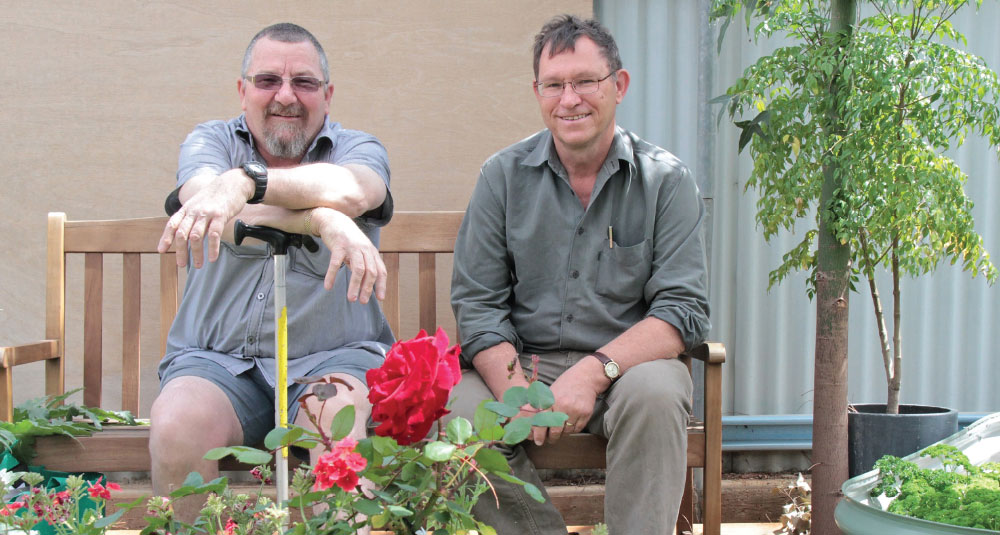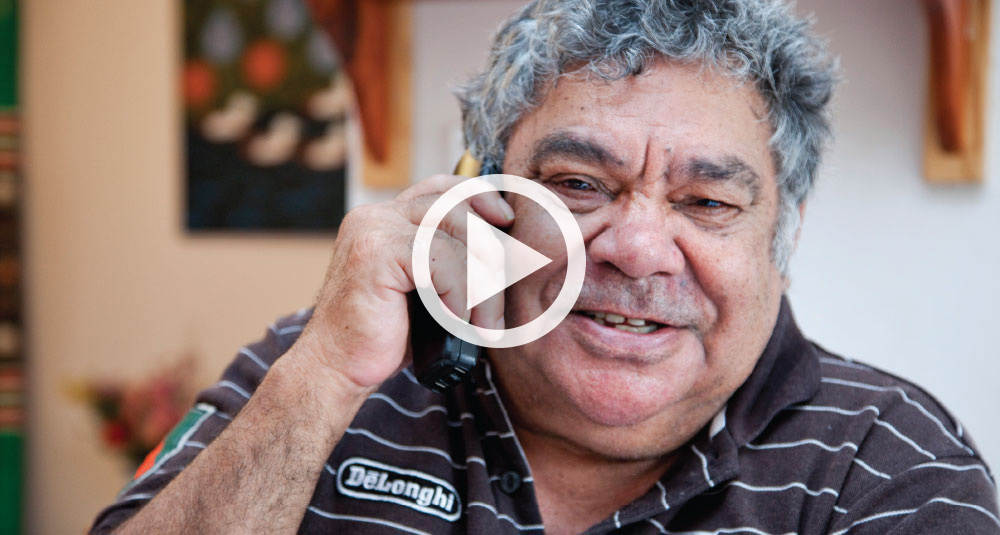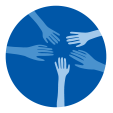Red Cross works to overcome the barriers socially isolated and disadvantaged people can have in accessing services and connecting with the community.

Personal Helpers and Mentors participant Greg Baxter (left) and Red Cross community development worker Trevor Sholson chat at the Red Cross Outdoor Learning Centre. The program supports people recovering from mental illness to develop skills and confidence, as well as access services and participate in their community. Kalgoorlie Miner.
Red Cross social inclusion programs work with people experiencing social isolation and exclusion in many different forms, including homelessness, mental health issues and people who have been in contact with the justice system.
In May 2013, CEO Robert Tickner told a Senate Inquiry into justice reinvestment that Australia spends $3.2 billion to keep people in prisons each year but this neither deters crime nor stops people from reoffending. Among the 23 recommendations put forward, Robert advocated for funds to be diverted to other community-based areas such as alcohol and drug services, mental health services, housing, education, employment and training to create pathways away from prison.
During 2012/2013 Red Cross established services in five locations to assist vulnerable older people facing homelessness. In addition, a new facility was established in Kalgoorlie — providing short-term safe accommodation for visiting Aboriginal and Torres Strait Islander peoples. Education, health, legal and recreation services are able to be accessed at the facility.
We continued to support people with mental health issues to build skills, confidence and connections back to the community. This included a new service in Clare Valley, South Australia assisting people recovering from mental health issues, and a job pathway program on the Fraser Coast in Queensland.
The TeleCHAT social phone call program delivered by Red Cross volunteers provides social connections and links to the community for isolated people. This service was expanded to NSW, Tasmania, WA and SA. This year also marked 20 years of the Community Visitors Scheme, where older people living in aged care facilities are matched with volunteers who visit them regularly.

When John’s friend passed away alone in his home, his body was left undiscovered for several days. Without any family living nearby, 72-year-old John was worried something similar could happen to him. This year, more than 7,000 Australians like John received a daily call from a Red Cross volunteer to check on their wellbeing. Australian Red Cross/Rick Carter.
Connecting people
The Community Transport Service in regional South Australia introduced a social inclusion model of transport in 2012/2013. Running in Ceduna, transport was provided to and from community services, social gatherings and medical appointments. Volunteers were also matched with participants for friendship and to help expand social networks. Through the service, older people, younger people living with disability and Aboriginal and Torres Strait Islander peoples can travel to necessary services and access opportunities. The model will be expanded to other South Australian regional locations.
Homelessness hub
Opened in January 2013, the Townsville Homelessness Services Hub provides a coordinated services entry point for people experiencing homelessness. Working collaboratively with a network of organisations, housing, health, legal, specialist homelessness and general support services are tailored to individuals and families. This integrated support provides a solution to the most pressing needs, and referral to the best ongoing support focused on long-term stability and sustainability.
Group volunteer visits
As part of the Community Visitors Scheme, Red Cross piloted an approach of group volunteer visits to people living in aged care homes, to reduce social isolation and loneliness. The pilot was evaluated independently and the Department of Health and Ageing is now incorporating group visiting into its guidelines for the service.



Let us know what you think
Any feedback or complaints about Red Cross or its work can be made at redcross.org.au or by calling 1800 811 700. Red Cross invites any feedback you may have regarding the Year in Review 2012/2013. Contact the editorial team at publications@redcross.org.au